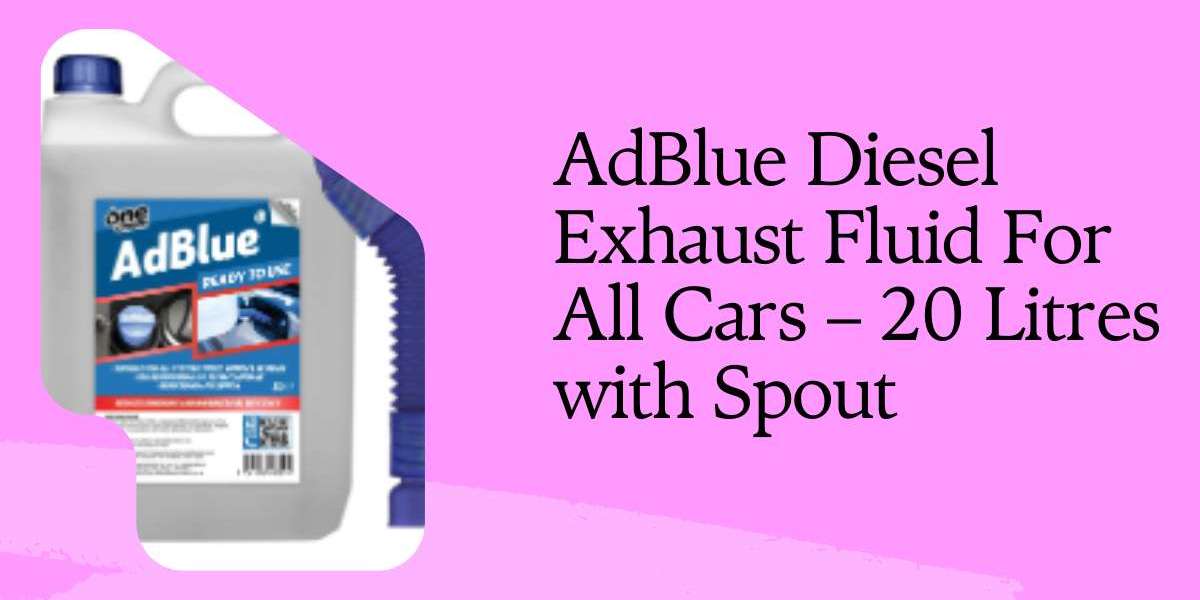Diesel vehicles are under strict emissions control in the UK. One essential product helping fleets and drivers meet regulations is Ad Blue. It's not a fuel or additive, but a fluid used in the emissions control system of modern diesel engines. This clear, non-toxic solution plays a big role in reducing harmful gases from exhausts.
Demand for Ad Blue has soared across Europe. As diesel engines remain common on UK roads, using Ad Blue is no longer optional—it’s required. Whether you drive for work or manage a commercial fleet, understanding Ad Blue is key to keeping vehicles compliant and running efficiently.
What Is Ad Blue?
Ad Blue is a urea-based fluid made of 32.5% high-purity urea and 67.5% deionised water. It's injected into a vehicle's exhaust system to reduce nitrogen oxide (NOx) emissions.
This fluid works with Selective Catalytic Reduction (SCR) technology. When sprayed into the hot exhaust gases, Ad Blue triggers a chemical reaction. This process turns harmful NOx into harmless nitrogen and water vapour.
According to the UK Department for Transport, nitrogen oxides are a major cause of air pollution in cities. That’s why Euro 6 standards now require most new diesel vehicles to use Ad Blue.
Why Is Ad Blue So Important in the UK?
In the UK, clean air zones are expanding. More cities are penalising non-compliant vehicles. Using Ad Blue helps drivers meet Euro 6 emissions limits and avoid fines.
Over 5 million diesel vehicles in the UK now rely on Ad Blue
15+ UK cities have low-emission zones where compliant vehicles benefit from tax savings
SCR systems with Ad Blue can cut NOx emissions by up to 90%
Quote:
“Using Ad Blue is no longer a choice—it’s a compliance tool,” says Sarah Morgan, Fleet Manager at Green Fleet Solutions UK.
How Does Ad Blue Work?
The system is simple. Once the engine heats up, Ad Blue is injected into the exhaust pipe before gases reach the catalytic converter. It reacts with NOx and breaks it down.
The result? A drastic drop in toxic gas emissions. This keeps your vehicle within legal emission limits.
Vehicles have a separate Ad Blue tank. When levels run low, a warning appears on the dashboard. If the tank empties, most vehicles won’t start until it’s refilled.
Where Can You Buy Ad Blue in the UK?
You can get Ad Blue almost everywhere:
Petrol stations
Supermarkets
Online retailers
Auto parts shops
Commercial bulk suppliers
Prices range from £0.60 to £1.50 per litre, depending on quantity and location. Bulk buying is ideal for large fleets.
Tip: Always store Ad Blue in a cool, dry place. Avoid contamination—it can damage the SCR system.
Which Vehicles Need Ad Blue?
Most diesel vehicles built after 2015 need Ad Blue, including:
Vans (e.g. Ford Transit, VW Crafter)
Trucks (e.g. Scania, DAF, Mercedes)
Buses and coaches
Some diesel cars (e.g. BMW, Audi, Peugeot)
If your vehicle is Euro 6 compliant, chances are high it needs Ad Blue.
Ad Blue Usage and Consumption Rate
How much Ad Blue you use depends on your vehicle type and driving style. On average:
Cars use 1 to 3 litres per 1,000 miles
HGVs can use 20+ litres per 1,000 miles
Most drivers refill Ad Blue every few thousand miles. Some vehicles have an Ad Blue range of up to 10,000 miles.
Check your manual for exact consumption.
Can You Drive Without Ad Blue?
Short answer: No. Once Ad Blue runs out, the engine may refuse to start. That’s built-in protection to prevent emissions breaches.
Always top up before it gets too low. Keep an eye on the dashboard warning light.
Common Myths About Ad Blue
Myth 1: It's a fuel additive.
Fact: It’s a separate fluid stored in a different tank.
Myth 2: It boosts engine performance.
Fact: It doesn’t affect power or mileage.
Myth 3: Any liquid can replace Ad Blue.
Fact: Only certified Ad Blue meets ISO 22241 standards. Using alternatives can cause serious damage.
How to Refill Ad Blue Properly
Refilling is easy. Locate the Ad Blue filler—usually next to the diesel cap or in the boot.
Steps:
Use only ISO-certified Ad Blue
Don’t overfill
Wipe off any spills—Ad Blue can crystallise
For large fleets, installing a bulk Ad Blue tank onsite saves time and money.
Ad Blue and MOT Tests in the UK
Since 2018, MOT tests include emissions checks. Vehicles with faulty SCR systems or no Ad Blue may fail.
Ensure your Ad Blue system works correctly. Regular checks help avoid unexpected failures.
What Happens If You Use Bad Ad Blue?
Low-quality or contaminated Ad Blue can block injectors and damage the SCR system. Repairs can cost over £1,000.
Always check the label for certification. Stick to trusted suppliers.
Ad Blue vs EGR (Exhaust Gas Recirculation)
Both systems reduce emissions but in different ways.
EGR recirculates exhaust gases to lower combustion temperature
Ad Blue chemically breaks down NOx post-combustion
Many modern vehicles use both. Together, they meet tough emission laws.
Environmental Impact of Ad Blue
Using Ad Blue helps cut air pollution. According to DEFRA, vehicles using SCR tech produce 90% less NOx.
That means cleaner air, especially in cities with high traffic. It supports UK efforts to reach net-zero emissions by 2050.
Cost of Ad Blue in the UK
Prices vary, but here’s a general idea:
5-litre bottle: £7–£10
10-litre container: £12–£18
IBC (1000L): From £300 (bulk purchase)
Fleet operators can save by using refill stations or ordering in bulk.
How to Store Ad Blue Safely
Store at -11°C to 30°C
Keep containers sealed
Avoid direct sunlight
Use within 12 months after opening
Proper storage keeps Ad Blue stable and safe.
Future of Ad Blue in the UK
With stricter emission rules and more clean air zones, Ad Blue use is expected to rise. The UK government continues to back cleaner diesel tech during the shift to electric.
More supply points are opening, and newer vehicles have larger Ad Blue tanks for convenience.
Final Thoughts
Ad Blue plays a crucial role in reducing diesel emissions in the UK. It keeps your vehicle legal, your emissions low, and helps protect the environment. Whether you run one van or an entire fleet, staying informed about Ad Blue helps avoid costly mistakes.
With rising eco-regulations, using Ad Blue is a smart move—for your wallet and the planet.













